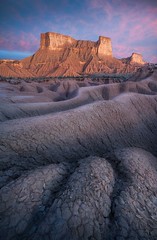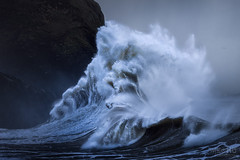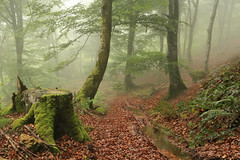Major nuclear accidents around the world
BEIJING – The Fukushima No.1 nuclear power plant in northeast Japan started to leak radioactive material after an hydrogen explosion, which was caused by a devastating earthquake and ensuring tsunamis, occurred Saturday afternoon.
The following are major nuclear accidents around the world since the former Soviet Union set up the world’s first nuclear power plant in 1954:
On Oct. 10, 1957, a fire broke out at the Windscale nuclear reactor (later renamed Sellafield) in northwest England, destroying the core and releasing a cloud of radioactive material. The sale of milk and other produces from nearby farms were banned for a month. Scores of people later developed cancer and died because of exposure to radiation.
On March 28, 1979, a partial core meltdown occurred at Three Mile Island in the United States due to its cooling system failure, in the most severe nuclear leak accident in the country which forced the evacuation of at least 150,000 local residents.
On April 26, 1986, the No.4 reactor at the Chernobyl nuclear plant in the former Soviet Union exploded, causing the worst nuclear disaster in history. The explosion killed 30 people on the spot, released more than eight tons of highly radioactive material, contaminated 60,000 square km of land, and caused more than 3.2 million people to be affected by radiation.
On April 6, 1993, a tank containing radioactive liquid exploded at the Tomsk-7 Reprocessing Complex in the Siberian region of Russia. A total of 10 square km of land was contaminated by radioactive material and a number of nearby villages were evacuated.
On Sept. 30, 1999, a nuclear accident occurred at a nuclear fuel plant at Tokai village, Ibaraki prefecture, Japan, killing two workers, exposing dozens of people to radiation and forcing the evacuation of local residents.
On Aug. 9, 2004, four workers were killed and seven others injured by a steam leak at the No.3 reactor at Kansai Electric’s Mihama power plant, 350 km west of Tokyo, Japan.
Relationship between earthquakes, tsunamis
BEIJING – An 8.9-magnitude earthquake struck northeastern Japan on Friday afternoon, the largest temblor ever recorded by the Japanese Meteorological Agency. The earthquake triggered a tsunami that swamped hundreds of kilometers around the epicenter.
The following is a brief introduction of the relationship between earthquakes and tsunamis.
A tsunami is a series of destructive waves, sometimes tens of meters high, caused by the displacement of a large volume of water, usually an ocean. With gigantic energy and fast movement, the waves are catastrophic to the affected coastal areas.
Tsunamis are usually triggered by earthquakes, volcanic eruptions and underwater explosions, landslides and other mass movements. Underseas earthquakes have generated nearly all the major tsunamis in history.
Tsunamis can be generated when the sea floor abruptly deforms and vertically displaces the overlying water. Tectonic earthquakes are a particular kind of temblor associated with the earth’s crustal deformation.
When these earthquakes occur beneath the sea, the water above the deformed area is displaced from its equilibrium position.
However, undersea earthquakes do not necessarily lead to tsunamis.
Statistics from the China Earthquake Administration show that of the past 15,000 undersea tectonic earthquakes, only about 100 generated tsunamis. Some experts hold that only earthquakes of above 6.5 magnitude and with a focal depth of less than 25 km underground can cause tsunamis.
Sometimes even strong earthquakes, such as the 8.5-magnitude qukae that occurred near Sumatra in 2005, do not trigger tsunamis because the quake intensity can be largely compromised by the great focal depth, experts say.
In addition to the earthquake magnitude, global climate change may also have a bearing on the occurrence of tsunamis.
According to experts from the China Meteorological Administration, the 2004 tsunami that struck Southeast Asia was partially linked to the rising sea level caused by global climate change.
What causes earthquakes?
The earth has four major layers: the inner core, outer core, mantle and crust.
The crust and the top of the mantle make up a thin skin on the surface of our planet. But this skin is not all in one piece — it is made up of many pieces like a puzzle covering the surface of the earth.
Not only that, but these puzzle pieces keep slowly moving around, sliding past one another and bumping into each other. We call these puzzle pieces tectonic plates, and the edges of the plates are called the plate boundaries.
The plate boundaries are made up of many faults, and most of the earthquakes around the world occur on these faults. Since the edges of the plates are rough, they get stuck while the rest of the plate keeps moving.
Finally, when the plate has moved far enough, the edges unstick on one of the faults and there is an earthquake.
Helicopters dump water to cool reactor in Japan
TOKYO – Japan’s Self-Defense Force are dumping water on the damaged No 3 reactor by helicopter following the plant’s operator Tokyo Electric Power Co (TEPCO) failing to cool it sufficiently on Wednesday and Thursday.
 A video grab show a helicopter is dumping water on a stricken reactor in Japan to cool overheated fuel rods inside the core on March 17, 2011. [Photo/Xinhua] |
|
||||
The plan was originally shelved as it was deemed too dangerous in light of the high levels of radiation, but following the rising heat of the reactor the government decided the water drop by the helicopters would be the best way to deal with climbing hydrogen levels.
The GSDF Ch-47 helicopters can carry up to 7.5 tons of water and have also started dumping water on the No 4 reactor as well.
Meanwhile, a Tokyo police unit is primed to use a water cannon truck to cool down a spent fuel rod pool in the No 4 reactor at the quake-stricken Fukushima Daiichi nuclear power plant.
The police announced that the ground operation will involve spraying water from outside of the reactor and is due to start on Thursday morning.
Following Friday’s devastating earthquake and tsunami in northeastern Japan, the temperature has been rising in the building that housing the No 4 reactor and its spent fuel storage pool, as cooling systems failed.
The building was rocked by a hydrogen explosion on Tuesday as well as a fire early on Wednesday adding to complications and raising concerns the fuel rods will melt and release radiation.
The police will aim their high pressure cannons at a hole in the wall of the damaged No 4 reactor housing structure to target the fuel storage pool.
 A video grab show helicopters are dumping water on a stricken reactor in Japan to cool overheated fuel rods inside the core on March 17, 2011. [Photo/Xinhua] Newscribe : get free news in real time |
















March 17, 2011 at 5:43 pm
Nuclear reactors require lots of water. That is why most nuclear reactors in the world are located on coastal seas areas!
Chang is needed now from the lessons learn from the current nuclear crisis in Japan!
LikeLike
March 18, 2011 at 11:09 am
Not Prophet of Doom but real Red Alert : Total meltdown seen in Japan – Written by Sam Chee Kong:
How bad is the nuclear crisis in Japan ? As usual the mainstream media and the Japanese government is doing its best to downplay the seriousness of the situation. Even though there are several explosion after the first explosion last week in the Fukushima Dai-Ichi nuclear facility , the Japanese government is still holding back a lot of information and they still maintain the danger level at 4 from the scale of 1-7, with seven being a full blown or meltdown crisis.
Yesterday a report from New Scientist (citing Kyodo) explains why Tepco and the Japanese authorities have been so tight lipped about what is happening in the Fukushima complex. The situation at Japan ’s Fukushima Dai-Ichi power plant has become extremely unstable. There are more than 650,000 spent fuel rods stored in this facilities for the past 40 years. The Tokyo Electric Power Company has now admitted that the spent fuel rods could go critical and that is – A NUCLEAR CHAIN REACTION COULD RESTART’. This would be an absolute WORST CASE DISASTER which would make Chernobyl disaster looks like a walk in the park.
And it is still insisting that the situation is still under control although the truth is that it is getting worse by each passing day. The radiation level around the Fukushima complex is so high that work had to be stopped due to ‘excessive level of radiation’ and THE RADIATION CLOUD is starting to spread.
If this continue to get worse it will end up killing more people than the Tsunami crisis. An official from the Nuclear Regulatory Commission said that ‘We are not talking about a repeat of Chernobyl but possibly talking about SEVERAL CHERNOBYLS’. Yup! that’s how serious thing are now. Below are some facts that showed how serious the situation are right now in Japan .
#1 Japanese Prime Minister are urging people living within 30 kms from the nuclear facility to stay indoor.
#2 Andre Claude LaCoste, head of France Nuclear Safety Authority said that the containment vessel surrounding the No. 2 reactor is ‘No longer sealed’
#3 Radiation level in Tokyo are already 10 times above normal level. Similarly Utsunomiya and Saitama are 33 and 40 times above normal levels.
#4 According to World Nuclear Association, exposure to 100 millisieverts of radiation a year can lead to cancer. At the moment the level of radiation measured outside the No 4 reactor in Fukushima complex is 400 millisieverts per hour.
#5 France , Germany , China , Czech , Finland , Austria and Russia are evacuating their Citizens.
#6 Physicist Frank Von Hippel told New York Times ‘Its way pass Three Mile Island already’
#7 The President of France’s Nuclear Safety Authority says that this crisis ‘is now almost as bad as Chernobyl . Its clear that we are at level 6 and that is the level of what happened between Three Mile Island and Chernobyl ’
#8 There have been reports of extremely high radiation at another nuclear facility in Japan . The radiation level at Onagawa nuclear plant is reportedly above 700 times the normal level.
#9 One anonymous senior nuclear scientist told the Times of India that the Japanese power industry managers are ‘basically in full scale panic mode’ and ‘they don’t know what to do’
#10 It is also reported that there are over 600,000 spent fuel rods stored at the Fukushima Dai-Ichi nuclear complex. Most of these rods are apparently stored ‘near the top of the 6 reactor buildings’. They have already been major explosions at three of these buildings. It is now feared that there is nothing to prevent many of these spent fuel rods from releasing radiation into the atmosphere. This is really bad news.
Radiation levels are increasing all over Northern and Central Japan . People are leavingTokyo and major cities around that area and foreign governments are evacuating their people. If one of those damaged reactors fully melts down it is going to be a complete and total nightmare.
This is a major WORLD CHANGING EVENT and your personal preparation for an uncertain future should be underway. Some of the basics are:
– Prepare for a nuclear fallout event though chances are slim due to the distance involved. The concern here is the 650,000 spent fuel rods that are burning away and possibly releasing radioactive material into the space. Get yourself some potassium iodine pills (KI pills) just in case.
– Get some cash out of the bank just in case there is a bank holiday.
– Buy extra food at the grocery store and put aside
– Buy some extra medicines just in case of emergencies
– Top up your fuel tanks
It’s better be early than a day late, when panic starts it will be too late. It will be very vulnerable in the coming days with events changing so fast.
Another event developing in the financial market is death of the Yen carry Trade. The USDJPY is plunging and NZDJPY, AUDJPY and ZARJPY are plunging far more than the USD. This is nothing short of a complete carry trade unwind. In the next few days we will see massive margin calls and many will be force to sell assets to satisfy collateral requirements.
The most troubling observation is that the BOJ has not intervened. After pumping almost US$ 700 billion into the money markets the BOJ’s kitty is already running very low. So for the next few days it will be interesting to see how the markets play out. If I am you, I will probably be more biased on holding cash and lighten my holding on stocks and other assets.
LikeLike
March 12, 2012 at 12:54 pm
[…] Major nuclear accidents around the world,What relationship & causes earthquakes & Tsunamis? … 0.000000 0.000000 Share this:StumbleUponDiggRedditLike this:LikeBe the first to like this post. Posted in civil liberties, Economy, Education, Politics, Technology. Tags: Economist, Fukushima, Fukushima Daiichi nuclear disaster, Nuclear power plant, Tepco. Leave a Comment » […]
LikeLike